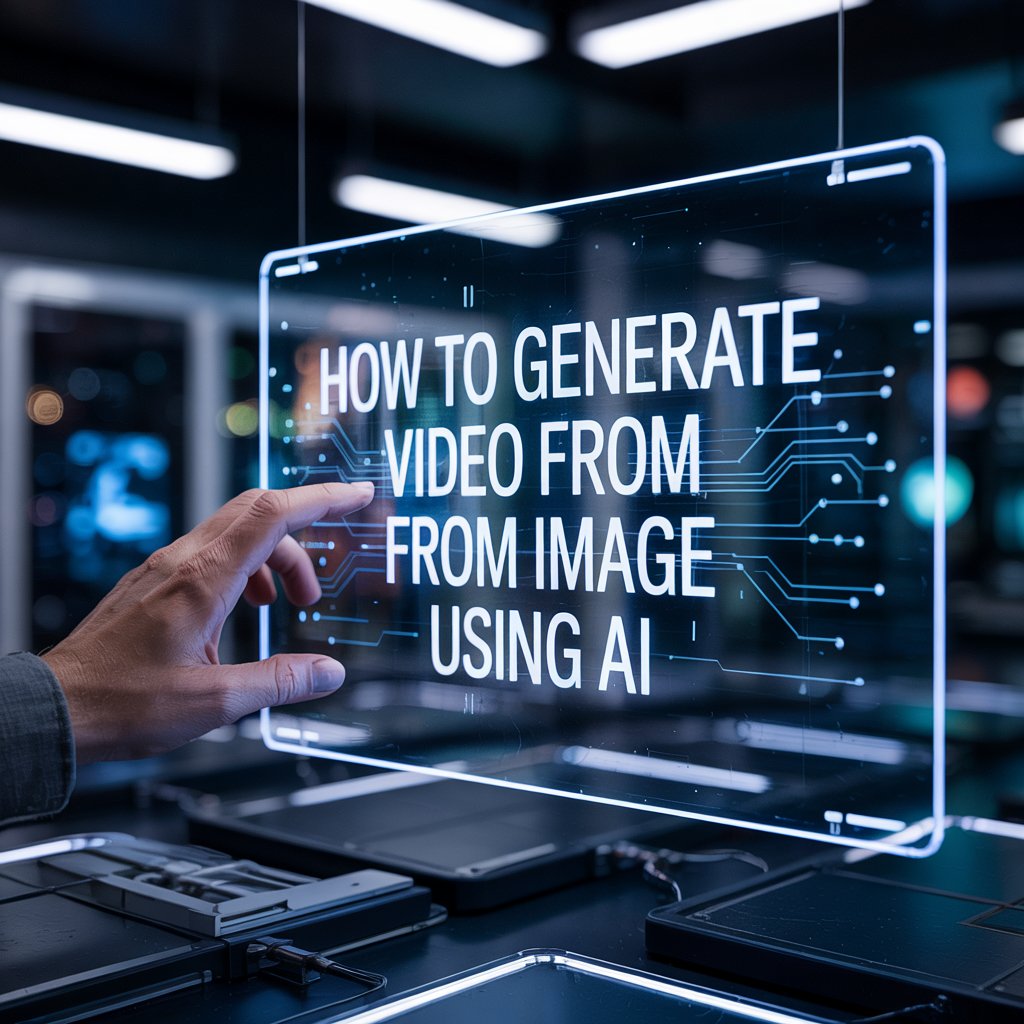Creating videos from static images using AI has become a game-changer for content creators, marketers, and businesses. AI-powered tools can transform a single image into engaging video content, saving time and resources while boosting creativity. In this guide, we’ll walk you through the process of generating videos from images using AI, highlight the best tools, and share tips to optimize your workflow.
Why Use AI to Generate Videos from Images?
AI video generation offers numerous benefits:
- Time Efficiency: Quickly turn static images into dynamic videos without manual editing.
- Cost-Effective: Reduce the need for expensive video production equipment or software.
- Versatility: Create content for social media, marketing campaigns, or presentations.
- Enhanced Creativity: Add animations, transitions, and effects effortlessly.
Whether you’re a small business owner, a content creator, or a marketer, AI video tools make it easy to produce professional-grade videos.
Step-by-Step Guide to Generate Video from Image Using AI
Step 1: Choose the Right AI Video Generation Tool
Selecting a reliable AI tool is crucial. Here are some popular options:
- Runway ML: Offers advanced AI features to animate images and create videos with text prompts.
- Pictory: Converts images and text into engaging videos, ideal for beginners.
- Synthesia: Specializes in creating videos with AI avatars from images.
- Kaiber: Focuses on artistic video generation with animation effects.
- Adobe Firefly: Integrates AI video generation with image-based workflows.
Tip: Compare features like ease of use, pricing, and output quality before choosing a tool.
Step 2: Prepare Your Image
For the best results, ensure your image is:
- High Resolution: Use images with at least 1080p resolution for crisp videos.
- Relevant Content: Choose images that align with your video’s purpose (e.g., product photos, landscapes, or portraits).
- Optimized Format: Save images in PNG or JPEG for compatibility with most tools.
Pro Tip: Edit your image for brightness, contrast, or color balance using tools like Canva or Photoshop for a polished look.
Step 3: Upload Your Image to the AI Tool
Most AI platforms have a user-friendly interface:
- Sign up or log in to your chosen tool.
- Navigate to the video generation section.
- Upload your image via the drag-and-drop feature or file explorer.
Step 4: Customize Video Settings
AI tools allow you to tweak settings to match your vision:
- Animation Style: Choose from options like zoom, pan, or 3D motion.
- Duration: Set the video length (e.g., 10 seconds for Instagram Reels or 30 seconds for YouTube Shorts).
- Music and Voiceover: Add background music or AI-generated narration.
- Text Overlays: Include captions or call-to-action text.
Tip: Experiment with different styles to see what resonates with your audience.
Step 5: Generate and Preview the Video
Once you’ve configured the settings:
- Click the “Generate” or “Create” button.
- Wait for the AI to process the image (this may take a few seconds to minutes).
- Preview the video and make adjustments if needed.
Step 6: Download and Share
After finalizing the video:
- Download it in your preferred format (MP4 is widely compatible).
- Share directly to platforms like YouTube, Instagram, or TikTok
- Optimize the video file size for faster uploads using compression tools like HandBrake.
Best Practices for AI-Generated Videos
- Align with Your Brand: Use consistent colors, fonts, and themes to maintain brand identity.
- Test Multiple Outputs: Generate a few versions to find the best fit for your audience.
- Optimize for Platforms: Tailor video dimensions (e.g., 9:16 for Stories, 16:9 for YouTube) and length for each platform.
- Add a Call-to-Action: Encourage viewers to engage, such as visiting a website or following your account.
Top AI Tools for Video Generation in 2025
Here’s a quick comparison of leading tools:
| Tool | Key Feature | Best For | Pricing |
|---|---|---|---|
| Runway ML | Advanced AI animations | Professional creators | Freemium, Paid Plans |
| Pictory | Text-to-video integration | Beginners, Marketers | Starts at $19/month |
| Synthesia | AI avatars and voiceovers | Corporate videos | Starts at $30/month |
| Kaiber | Artistic and music-driven videos | Social media content | Freemium, Paid Plans |
| Adobe Firefly | Seamless Adobe ecosystem integration | Designers, Adobe users | Included in Adobe Plans |
Note: Pricing and features may vary. Check the official websites for the latest details.
Common Challenges and How to Overcome Them
- Low-Quality Output: Use high-resolution images and premium plans for better results.
- Limited Customization: Explore advanced settings or switch to a more flexible tool.
- Processing Time: Opt for cloud-based tools with faster rendering speeds.
- Cost Concerns: Start with free trials or freemium plans to test tools before committing.
Conclusion
Generating videos from images using AI is a powerful way to create engaging content quickly and affordably. By choosing the right tool, preparing your image, and optimizing your video for SEO, you can captivate your audience and boost your online presence. Start experimenting with AI video tools today and unlock endless creative possibilities!

Leave a Reply